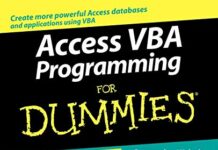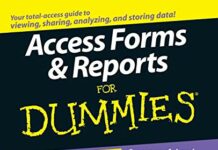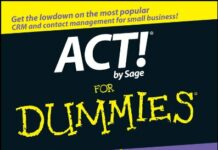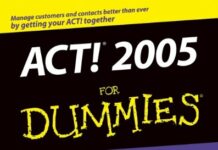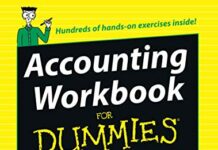
Ebook Info
- Published: 2009
- Number of pages: 384 pages
- Format: PDF
- File Size: 17.71 MB
- Authors: Mary Jane Sterling
Description
Learn to:Solve linear algebra equations in several waysPut data in order with matricesDetermine values with determinantsWork with eigenvalues and eigenvectorsYour hands-on guide to real-world applications of linear algebraDoes linear algebra leave you feeling lost? No worries —this easy-to-follow guide explains the how and the why of solving linear algebra problems in plain English. From matrices to vector spaces to linear transformations, you’ll understand the key concepts and see how they relate to everything from genetics to nutrition to spotted owl extinction. Line up the basics — discover several different approaches to organizing numbers and equations, and solve systems of equations algebraically or with matricesRelate vectors and linear transformations — link vectors and matrices with linear combinations and seek solutions of homogeneous systemsEvaluate determinants — see how to perform the determinant function on different sizes of matrices and take advantage of Cramer’s ruleHone your skills with vector spaces — determine the properties of vector spaces and their subspaces and see linear transformation in actionTackle eigenvalues and eigenvectors — define and solve for eigenvalues and eigenvectors and understand how they interact with specific matricesOpen the book and find:Theoretical and practical ways of solving linear algebra problemsDefinitions of terms throughout and in the glossaryNew ways of looking at operationsHow linear algebra ties together vectors, matrices, determinants, and linear transformationsTen common mathematical representations of Greek lettersReal-world applications of matrices and determinants
User’s Reviews
Editorial Reviews: From the Inside Flap Learn to:Solve linear algebra equations in several waysPut data in order with matricesDetermine values with determinantsWork with eigenvalues and eigenvectorsYour hands-on guide to real-world applications of linear algebraDoes linear algebra leave you feeling lost? No worries —this easy-to-follow guide explains the how and the why of solving linear algebra problems in plain English. From matrices to vector spaces to linear transformations, you’ll understand the key concepts and see how they relate to everything from genetics to nutrition to spotted owl extinction. Line up the basics — discover several different approaches to organizing numbers and equations, and solve systems of equations algebraically or with matricesRelate vectors and linear transformations — link vectors and matrices with linear combinations and seek solutions of homogeneous systemsEvaluate determinants — see how to perform the determinant function on different sizes of matrices and take advantage of Cramer’s ruleHone your skills with vector spaces — determine the properties of vector spaces and their subspaces and see linear transformation in actionTackle eigenvalues and eigenvectors — define and solve for eigenvalues and eigenvectors and understand how they interact with specific matricesOpen the book and find:Theoretical and practical ways of solving linear algebra problemsDefinitions of terms throughout and in the glossaryNew ways of looking at operationsHow linear algebra ties together vectors, matrices, determinants, and linear transformationsTen common mathematical representations of Greek lettersReal-world applications of matrices and determinants From the Back Cover Learn to:Solve linear algebra equations in several waysPut data in order with matricesDetermine values with determinantsWork with eigenvalues and eigenvectorsYour hands-on guide to real-world applications of linear algebraDoes linear algebra leave you feeling lost? No worries —this easy-to-follow guide explains the how and the why of solving linear algebra problems in plain English. From matrices to vector spaces to linear transformations, you’ll understand the key concepts and see how they relate to everything from genetics to nutrition to spotted owl extinction. Line up the basics — discover several different approaches to organizing numbers and equations, and solve systems of equations algebraically or with matricesRelate vectors and linear transformations — link vectors and matrices with linear combinations and seek solutions of homogeneous systemsEvaluate determinants — see how to perform the determinant function on different sizes of matrices and take advantage of Cramer’s ruleHone your skills with vector spaces — determine the properties of vector spaces and their subspaces and see linear transformation in actionTackle eigenvalues and eigenvectors — define and solve for eigenvalues and eigenvectors and understand how they interact with specific matricesOpen the book and find:Theoretical and practical ways of solving linear algebra problemsDefinitions of terms throughout and in the glossaryNew ways of looking at operationsHow linear algebra ties together vectors, matrices, determinants, and linear transformationsTen common mathematical representations of Greek lettersReal-world applications of matrices and determinants About the Author Mary Jane Sterling is the author of numerous For Dummies books. She is a lecturer at Bradley University in Peoria, Illinois, where she has taught courses in algebra, calculus, and other mathematics topics for almost 30 years. Read more
Reviews from Amazon users which were colected at the time this book was published on the website:
⭐I like most of the ‘For Dummies’ series but not this one. This book simply turns the user into a mathematical black box (put numbers in here, get numbers out here); like a black box, the reader will have no idea why they are performing these complex, if relatively simple, operations.For example, here is how the author introduces the topic of a Determinant, Vectors and Eigenvalues.”A determinant is tied to a matrix, as you see in Chapter 10. You can think of a determinant as being an operation that’s performed on a matrix. The determinant incorporates all the elements of a matrix into its grand plan. You have a few qualifications to meet , though, before performing the operation determinant.””A vector is an ordered collection of numbers. Vectors containing two or three numbers are often represented by rays (a line segment with an arrow on one end and a point on the other end). Representing vectors as rays works with two or three numbers, but the ray loses its meaning why you deal with larger vectors and numbers. Larger vectors exist, but I can’t draw you a nice picture of them.””First, the German word eigen means own. The world own is somewhat descriptive of what’s going on with eigenvalues and eigenvectors. An eigenvalue is a number, called a scalar in this linear algebra setting. And an eigenvector is an nx1 vector. An eignevalue and eigenvector are related to a particular nxn matrix.”The above sentences provides no conceptual notion about what a determinant is. It provides no connection to the real world. It offers no motivation as to why I ought to learn about it. Every concept in this book is treated this way; it shows you how to perform the manipulations but refuses to relate these operations to the world around us. While the math in any individual chapter is easy to grasp, without insight to the physical world, the terms and operations quickly blur into each other. It is frustrating.
⭐I’ve been all the way through this book once. I knew some linear algebra before, but also learned some new things here. I’ve also been watching a lot of videos at Khan Academy, as well as for an MIT course available on youtube. So this has not been my only resource.I think that, if you know nothing at all about linear algebra, and start reading this book, you will reach a point somewhere before the one-third way that you’ll be utterly confused. Linear algebra is a very abstract topic, and a book of this brevity just doesn’t have the opportunity to hammer topics home and cement them firmly before moving on.However, I think this book is very good in addition to other learning materials. It helped to reinforce them, and they helped to reinforce it. (I strongly recommend a book that has lots of exercises in addition to this one.) The book has some content devoted to real-world applications, to try to demonstrate why linear algebra is important, but don’t expect too much along that line. A lot of ground is covered, so most of the material is devoted to getting concepts across, rather than showing how to apply them to real-world problems.As far as the “humor” associated with Dummies books, there really isn’t any here. Instead, there’s plenty of what I might call “quirky” phrasing, which is unfortunate, because if you’re already confused by the topic, you might wonder whether a given phrase is significant, or just another lame attempt to make the book “fun.”Overall, I’m glad I got the book. It helped to move me along. I won’t say it made me an expert on the subject, but now I can easily define all kinds of terms, linear independence, a vector space, a basis, a dimension, a determinant, orthogonality, orthonormalization, eigenvectors–these and more are finally anchored firmly in my mind.
⭐This book is not the greatest. I prefer Calculus for Dummies. That one was a much better read. This one is not so much about concepts but more math-y with steps. I hate that stuff because without concepts you basically are left to memorize steps. I don’t recommend buying if you want to understand concepts.
⭐Seems to teach the concepts well enough, tries to do the “tease concept” far too often and never really explains where things would be used or why.A surprising amount of typos as well.If you are using this as an additional method alongside other books / videos / classes then it’s fine.
⭐I have purchased many “Dummies” books in the past, and found most of them very helpful, but I am disappointed in Linear Algebra for Dummies. I have read to page 43, and found 2 errors, one of which is major. What worries me is, how many errors am I not catching, but accepting as fact? I should have read the other reviews before purchasing this book. (The major error I noticed is on page 43, where the author says “When multiplying matrices, the number of columns in the first matrix has to match the number of columns in the second matrix”. But it should read: the number of columns in the first matrix has to match the number of *ROWS* in the second matrix. This is a ridiculous mistake for a math textbook.)
⭐Meh. It wasn’t as helpful as I’d hoped.
⭐I found this book very helpful for putting the abstract language of linear algebra into laymen’s terms. I now read it in conjunction with my regular linear algebra textbook. I wish I had bought the book at the beginning of the semester, rather than halfway through, which by that time, I’d dug myself a rather deep hole. My only complaint is that it isn’t quite as exhaustive on terminology as maybe it could/should be. That said, it’s been a very helpful book, and it might, just might, get me through the class with a C.
⭐Haven’t read it yet but from my scanning of the book, it should work just fine.
⭐The pure maths of linear algebra are, let’s face it, quite distant from the real world applications. It would take an eloquent teacher to relate the real world problem to the matrix description of the real world concept, show the maths operations and relate these, or at least the result back to the real world. It’s clear enough that bridging this conceptual gulf was in the mind of the author and a valiant attempt was made, but somehow I was left on one side of the abyss or the other without finding the bridge. Maybe I was looking for the wrong analogy.
⭐There’s easier ways to learn about Vectors, Angles, Dot products, Cross products and other fundamentals, and that’s by visiting MathsIsFun.comI have no affiliation or relation to that website. I just feel being able to visually see the vectors and angles in question makes you learn faster than reading this book.I’ve heard the GeoGebra app is excellent as well.
⭐I realize it’s difficult writing math books for dummies, but this one is just way too fragmented. I’ve bought plenty of other math books in the dummies series and, while I’ve never been able to throw away my other textbooks and rely on them completely, they’ve all certainly done a better job of making things come together than this one.
⭐I enjoyed this book which is very well-explained and also manages to transmit enthusiasm about the subject. If it is meant to be understandable to newcomers to math/s then I think it succeeds. There are lots of great worked examples (but no actual exercises). I am considering some other of the authors’ books. However, I did find that I had to wade through quite a lot of material in order to find the parts that I am interested in (specifically material providing a background to graphics and geographical programming). A second ‘but’ (no criticism of this book) is that some of the ‘real’ mathematical constructions (e.g. vector spaces) is arguably quite daunting and abstract. If the book had been limited to just the mathematical discoveries/formulae/techniques (such as uses of determinants) that I can use in practice, I would have been even happier.
⭐Fantastic aid to maths students. Clearly set out, easy to understand. My MChem. student sons have used it to help with the chemistry maths they must master and have commented on how the book has cleared up questions they had on algebra that were once causing them to struggle. They recommend this book.
Keywords
Free Download Linear Algebra For Dummies 1st Edition in PDF format
Linear Algebra For Dummies 1st Edition PDF Free Download
Download Linear Algebra For Dummies 1st Edition 2009 PDF Free
Linear Algebra For Dummies 1st Edition 2009 PDF Free Download
Download Linear Algebra For Dummies 1st Edition PDF
Free Download Ebook Linear Algebra For Dummies 1st Edition
